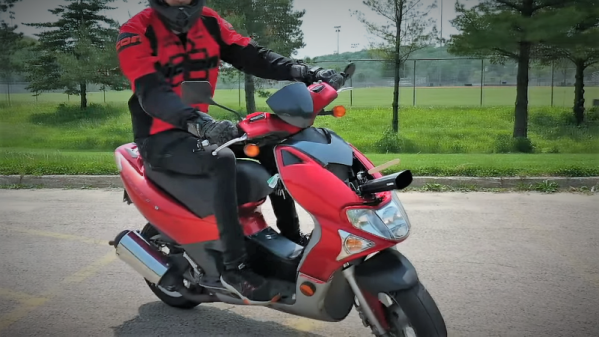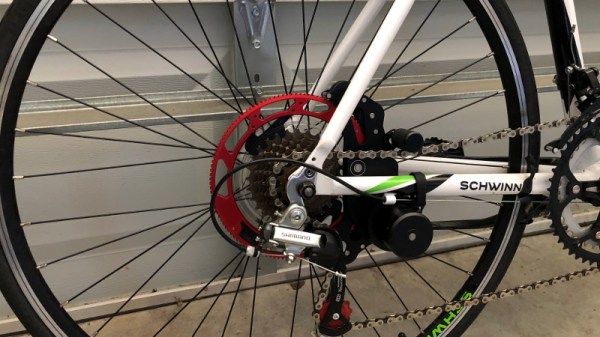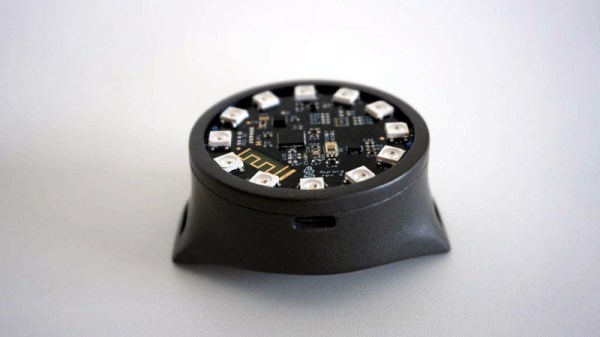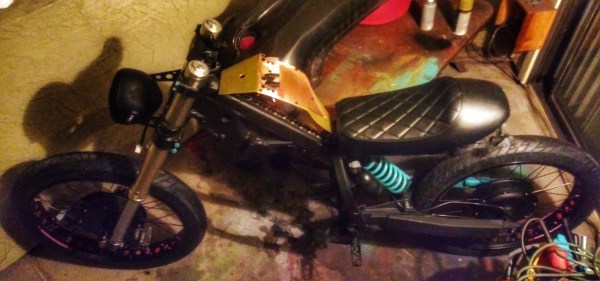Cue up the [Christopher Walken] memes, it’s time for moped turn signals with more cowbell. Because moped turn signals with less cowbell are clearly the inferior among moped turn signals.
It seems that [Joel Creates] suffers from the same rhythm recognition disorder that we do. The slightest similarity between a rhythmic sound such as turn signals, and any song in our seemingly infinite intracranial playlist cues up that song for the rest of the day. [Joel] heard “(Don’t Fear) The Reaper” in his turn signals, and that naturally led to a need for More Cowbell. So with a car door lock actuator, a relay, an improvised clapper, and a lot of hot glue and cable ties, the front of his scooter is now adorned with a cowbell that’s synchronized to the turn signals. The video below shows that it’s of somewhat limited appeal in traffic, but at least [Joel’s dad] was tickled pink by it.
Kudos to [Joel] for marching to the beat of his own [Gene Frenkle] on this one. It may be a little weird, but not as weird as an Internet of Cowbells.
Continue reading “Moped Turn Signals, Now With More Cowbell”





















